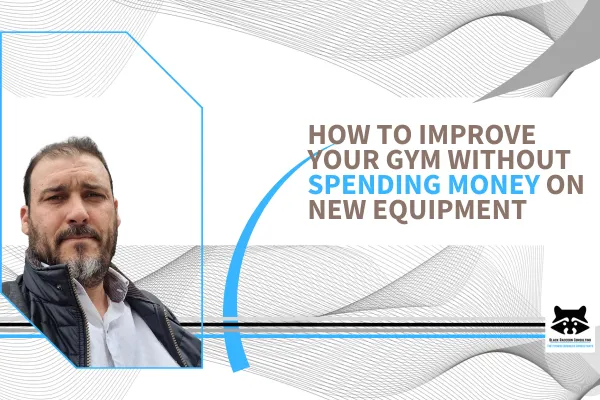NeuroFitness Studio: The Future of Fitness Is Already Here
“Where Mind, Muscle, and Machine Become One.”
What will the fitness industry look like in 200 years?
We asked ChatGPT, and the answer wasn’t a new treadmill, a stronger protein powder, or another wearable gadget. It was something far more radical—a completely reimagined concept called the NeuroFitness Studio.
This isn’t science fiction. It’s the logical evolution of what happens when neuroscience, artificial intelligence, biometrics, and high-performance training collide. And once you understand it, you’ll never look at fitness the same way again.
What Is a NeuroFitness Studio?
A NeuroFitness Studio is a training environment where your brain is the first muscle you train. It combines neuroscience, live biofeedback, AI-assisted equipment, and adaptive workout design to deliver faster results, greater recovery, and longer-lasting performance.
Here, workouts are no longer one-size-fits-all. Instead, every session is tailored to your neural and physical readiness—optimising every rep, breath, and movement based on how your mind and body feel today, not last week.
The Five Core Principles of NeuroFitness
1. Mind-Body Sync Comes First
Before touching a weight or hopping on a treadmill, your mental state is assessed. Using a lightweight neural headband or sound-based stimulation, the system measures your focus, stress levels, and cognitive readiness.
It then primes your brain for the task ahead:
Alpha waves for relaxed cardio
Beta waves for strength and focus
Theta waves for creative flow or recovery
By tuning your brainwaves, you not only perform better—you also learn faster. Studies suggest this kind of mental priming could enhance skill acquisition by 2–3x and make workouts 30–40% more effective.
2. Real-Time Biofeedback During Exercise
As you train, the studio continuously monitors key metrics through smart sensors:
Heart rate
Brainwave activity
Muscle oxygen saturation
Blood glucose levels
Emotional tone (via facial micro-expressions)
The system responds in real time. If you begin to fatigue, it might ease the resistance. If your focus wavers, it could lower music tempo or suggest a micro-recovery break. Your training becomes dynamic—alive, responsive, and precisely attuned to your body’s signals.
3. NeuroDriven Workouts Replace Sets and Reps
In the NeuroFitness Studio, traditional training structures are outdated. You don’t follow a set programme—you follow your neural readiness.
On high-focus days, you might pursue strength or speed. On mentally fatigued days, you shift to mobility, breathwork, or flow-based movement. No two workouts are ever the same, and that’s by design. Your body and brain change daily—your training should too.
4. Smarter Recovery Equals Greater Gains
Recovery is no longer an afterthought. It’s built into the system, and it’s science-backed. After training, members enter the Recovery Lounge, where they can choose from:
Neuro-Calm Pods offering 10-minute VR meditations tailored to brain fatigue
Electro-Neural Massage Suits that stimulate nerve pathways for faster recovery
Lucid Dream Programming, a night-time tool that helps embed movement patterns during REM sleep
This isn’t about pampering—it’s about optimising neural recovery so you can return to peak performance faster than ever before.
5. A Fully Immersive, AI-Guided Experience
Every visit begins with a full-body and brain scan. A smart mirror or holographic interface displays your:
Focus score
Recovery index
Brain-muscle readiness
Suggested training pathway
Your AI coach then offers three options based on your status: “Train like an athlete, recover like a monk, or grow like a warrior?” You choose. The system adapts. Your experience begins.
Every decision is data-driven, every exercise purposeful, and every moment optimised for who you are right now.
Inside a NeuroFitness Studio: The Key Zones
ZonePurposeNeuro-Priming ZoneBrain warm-up and mental tuningBio-Adaptive FloorSmart equipment that adjusts in real timeRecovery Cocoon LoungeRed light therapy, brainwave pods, and electro-suitsConscious Breathing RoomGuided VR breathwork and heartbeat trainingNeuroPlay ZoneHigh-speed games to boost reflexes, memory, and agility
Each area supports not only physical improvement, but also mental clarity, emotional resilience, and cognitive sharpness. The aim is not just to build a better body—but to build a more capable human being.
Could This Be Built Today? Yes—Here’s How
While we may be a few decades away from full neural integration, much of the technology already exists. A first-generation NeuroFitness Studio could be built in 2025 using:
Smart headbands like Muse or Cove to scan mental state
AI-assisted smart mirrors (e.g., Tonal or Tempo) with form coaching
Wearables tracking HRV and recovery data
Red light recovery chairs for post-session therapy
VR breathwork or gamified cardio apps to enhance engagement
It won’t be quite 2225 yet, but it will feel like stepping into the future compared to most gyms today.
Why This Changes Everything
The traditional gym model focuses only on the body. But the brain controls:
Motivation
Movement
Focus
Recovery
Long-term consistency
When you train the brain first, the results multiply. And when you build a gym around real-time human feedback, you create experiences that adapt, inspire, and evolve with every visit.
Final Thought: Would You Train This Way?
Imagine walking into a studio tomorrow and hearing:
“Welcome back. Your mental energy is low today. We’ve adapted your programme to focus on restorative flow, breathwork, and a short VR meditation. We’ll reinforce yesterday’s strength pattern in your sleep tonight.”
It’s personalised. It’s powerful. It’s purposeful.
This is not just where fitness is going. It’s where it needs to go.
The question is: Would you train this way? And if you’re a gym owner, would you build it?
Because the future isn’t waiting.
%20(1920%20x%201080%20px).png)



